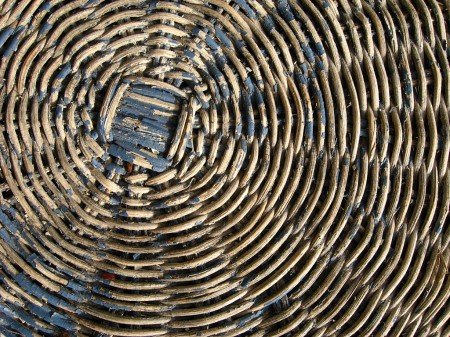
As is virtually always the case when reading Michael Pollan’s work, The Botany of Desire makes me want to share virtually every page and idea with friends. While a full review will have to wait, one thing that struck me while reading tonight is the situation with genetically engineered Bt crops, as discussed in the last section of the book.
Monsanto’s spuds
Bt is short for Bacillus thuringiensis: a soil bacteria that produces a poison that slays many crop-eating insects. Because it is naturally occurring, the bacterially derived poison is even permitted in many systems of organic agriculture. Genetically modified crops like Monsanto’s NewLeaf tomatoes have had the gene for the manufacture of the poison introduced into their own genetic material.
This is done in one of two relatively crude-seeming ways. Either the gene is inserted into a pathogen that is then allowed to infect the cells of the plant to be modified or DNA is literally shot into the target plant using a .22 caliber ‘gene gun.’ In most cases, the genes don’t end up in the right part of the target plant’s genome. In no cases do we comprehensively appreciate what kind of changes we are creating.
What we do know is this: when we create an environment where pests are exposed to a monoculture of Bt-generating plants, the pests will eventually evolve resistance. According to Pollan, Monsanto expect this to happen to Bt in about thirty years.
This is shocking when you think about it. Firstly, it reveals a kind of extreme short-termism in planning – the expectation that we can keep running on the treadmill and finding new solutions. Secondly, it reveals considerable unethical selfishness. Bt is used by many people other than Monsanto and Monsanto’s customers. The Bt-modified plants threaten to ruin the substance for everybody. Thirdly, it should be remembered that it is not only the resilience of the GM crops that may be undermined. Naturally occurring organisms defending themselves with Bt toxin and similar compounds may suddenly face invulnerable pests, with unknown consequences for nature.
Perhaps the most depressing thing about this section in Pollan’s book is the convincing argument that the above is actually an improvement over conventional potato production. To take the most egregious example, potatoes are regularly sprayed with an organophosphate pesticide called Monitor in order to kill aphids. This is because aphids carry a virus that gives potatoes brown spots inside. People don’t want to eat such potatoes, so farmers respond by spraying the plants with a substance akin to the deadliest of military nerve gasses.
The bigger picture
The more I read about energy usage, climatic science, agriculture, and fisheries, the more deeply green I become. It is pretty challenging to read something as compelling as Michael Pollan’s accounts of industrial agriculture and not begin to profoundly question the kind of soft-green liberal environmentalism that claims that there are just a few environmental externalities that we need to sort out before capitalism as practiced becomes sustainable.
P.S. Names like NewLeaf remind me instantly of Margaret Atwood’s excellent novel Oryx and Crake: essential reading for those trying to make sense of biotechnology’s brave new world.





